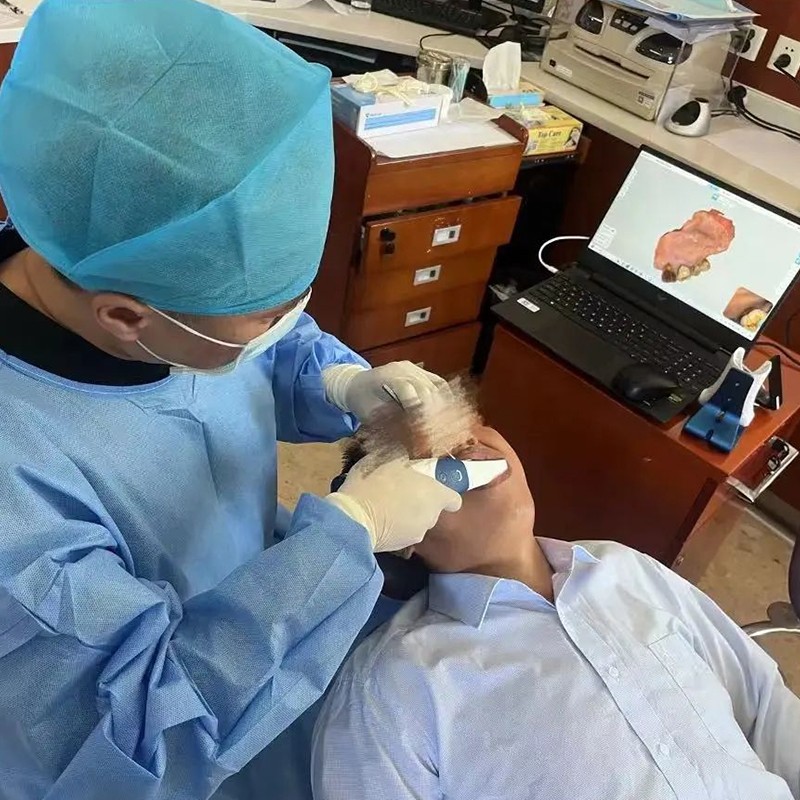Make Dental Work Easier
Bring the best Chinese digital dentistry solution to Africa.
New technologies are rapidly evolving and the digital revolution is enriching every aspect of our lives, and the field of dentistry is no exception. Digital technology has brought convenience to both doctors and patients in all aspects, mainly in three aspects.
Firstly, digital technology saves a lot of time in the field of dentistry. Whether it is dental restoration or implantation, it only takes a few hours from tooth preparation to tooth wearing. The traditional method requires taking the model, filling the plaster and sending it to the processing plant for the technician to operate and trim, which is a very tedious and time-consuming process. Now, with the help of dental scanners and 3D printing technology, doctors can complete the digital restoration process directly in the clinic, greatly reducing time and increasing efficiency.
Secondly, digital technology also eliminates a lot of manual labour for doctors. Previously, doctors needed to physically take the model and fill it with plaster, then send it to a fabrication shop to wait for a technician to perform the operation. Now, the doctor only needs to use the oral scanner to obtain information about the teeth, gums, mucosa and other hard and soft tissues, and then transfer this information to the digital processing equipment, automatic processing and shaping, and ultimately get the restoration. This greatly reduces the doctor's labour intensity, allowing doctors to focus more on clinical work and patient care.
Finally, the main trends of digital products in dentistry include oral scanners, 3D printing technology and materials, denture and orthodontic appliances, artificial intelligence, and dental digital platforms. One of the more familiar technologies is CAD/CAM. CAD refers to computer scanning software that draws the design of a tooth, while CAM involves computer-controlled digital machining equipment that automatically processes and shapes the tooth, ultimately resulting in a restoration. Oral scanning can be further divided into intraoral scanning and extraoral model scanning. Intraoral scanning uses a small probing optical scanning head, which can be used to obtain information about teeth, gums, mucosa and other hard and soft tissues directly in the oral cavity, which is relatively more accurate and faster.
In conclusion, the application of digital technology in dentistry makes the clinical restorative process more concise, fast and accurate. Through the application of digital products, the restorations produced are more natural and beautiful, providing patients with better oral health solutions.

Copyright © 2024 Golden Promise Dental Co.,Ltd. | All Rights Reserved
We are here to help you! If you close the chatbox, you will automatically receive a response from us via email. Please be sure to leave your contact details so that we can better assist